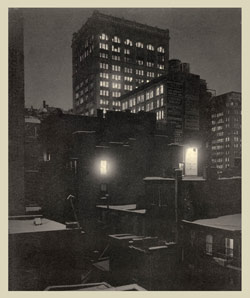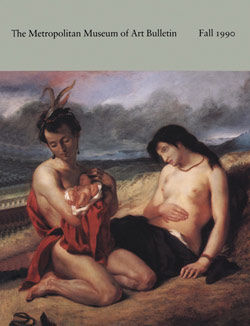Rebecca, New York
Paul Strand American
Not on view
This exceptionally open, intimate portrait of Rebecca Strand is one of more than a hundred that Paul Strand made of his wife between 1920 and 1932. The series was so strongly influenced by Alfred Stieglitz's celebrated extended portrait of his wife, Georgia O'Keeffe, that Strand's parallel project, pursued in close contact with his friend and mentor, may be considered an implicit act of homage.
Strand's long artistic apprenticeship to Stieglitz, begun through visits to Stieglitz's gallery in 1913, came to an end with the suite of portraits he took of Rebecca in 1922–23. Whereas his earlier attempts appear strained because their long exposures required a headrest—the "iron virgin" of the studio practice—in 1922 Strand photographed his wife in bed. The removal of the former constraint and the new, supine position allowed Strand to reject the upright format of traditional portraiture and to frame boldly, solely to the dictates of his desire.
The artist's freedom and his model's relaxation, intensified by their deep emotional bond, resulted in a portrait of extraordinary sensitivity and immediacy—a fresh but assured response to svelte formal elegance. Thus, the modernist enterprise, Stieglitz's example, and Strand's talent found peaceful resolution and unforgettable union in the closely cropped, diagonally framed, breathing presence of Rebecca Strand.
Due to rights restrictions, this image cannot be enlarged, viewed at full screen, or downloaded.



